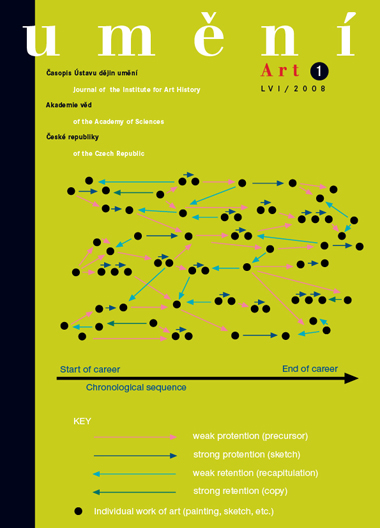Ladislav Kesner
Dějiny umění a teorie mysli
In art history, interpretation is a special form of uncovering the various turns of the mind's affections. The art historian and critic - more than any other humanist - often turns into a kind of unwitting psychologist. But modern art history is marked by a paradox: on the one hand, it harbours a fear of the mental world and distances itself from disciplines focusing on the human mind; a fear that 'psychologising' would disturb the epistemological status of art history's understanding and self-definition as a scholarly field. On the other hand, there remains an imperative to make reference to the various expressions and functions of the mind, and constructing a plausible explication of a work of art without referring to concepts of the human mind and how it works may even be impossible. Contemporary advances in research on the brain and the human mind and its reflection in philosophy (especially the program of naturalization of mind) constitute a theoretical challenge for art history that is at least as great in scope as that represented by the influx of linguistic models and the whole wave of post-structuralism and deconstruction a couple of decades ago. They opened up new frontiers for reflections on the purport and potential of art-historical interpretations and communicating the meanings of works of art to the public. Understanding the meaning of many works of art and even explaining the logic behind the formal synthesis, visual character, and singularity of a work of art is integrally linked to the functions of a viewer's psychosomatic constitution, that is, to how they activate their innate biological abilities (empathy, emotions) for construction of visual meaning. It is impossible to reconstruct the meaning of a work and furnish an acceptable explanation of what it means without explaining why and how it affected it made its original audiences. The prevailing academic practice mostly strictly separates scholarly interpretation from personal experience. New knowledge about the function of mirror neurons and the biological bases for empathy and embodied understanding points to the factitiousness of barriers to interpretation and experience. A challenge for everyone who is engaged in interpreting and presenting works of art is to recognise and learn to activate the inner resources that viewers possess for creating aesthetic experience.
Full-text in the Digital Library of the Czech Academy of Sciences:
https://kramerius.lib.cas.cz/uuid/uuid:e604cbcc-91dd-9777-b889-e665e931302b
< back

